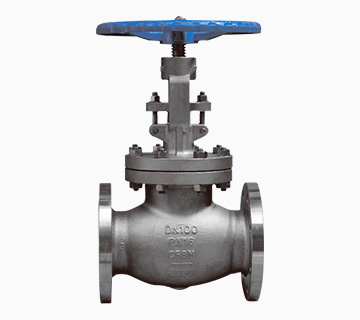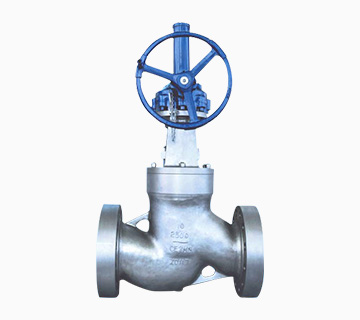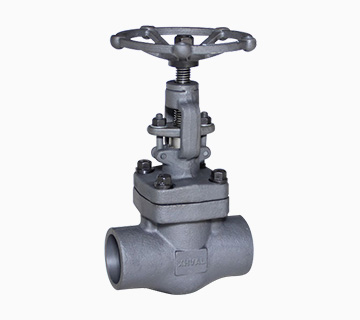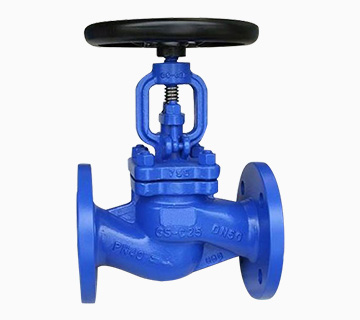Globe Valve Manufacturer
Home » Globe Valve
Globe Valve
XHVAL is a globe valve manufacturer that offers four types of globe valves. Our valve factory in China produces cast steel globe valves for low and low-pressure applications. XHVAL is also a supplier of forged steel and bellows sealed globe valves.
REQUEST A QUOTE FOR MORE DETAILS
All You Need to Know About Globe Valves
Globe valves are known for effective controlling and throttling of fluids. Sometimes called the throttle valve, globe valve functions in three ways: stop the flow, start the flow or throttle the flow.
It has a round-shaped valve body containing disc which then acts as a gate. Use globe valves if maintaining pressure level or reduction in pressure loss is not the top priority, but requires control to media flow.
This article provides a guide on globe valves. It discusses the applications, mechanisms, the factors to consider when making purchases, and the different types of globe valves available on the market. Lastly, this guide will help you compare globe valves with other types of industrial valves.
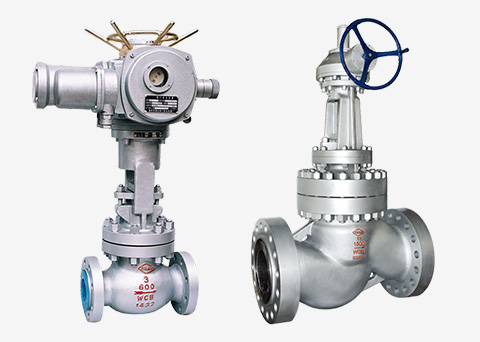
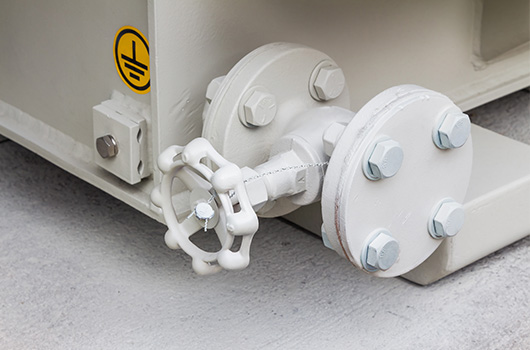
What Are Globe Valves Used For?
Otherwise known as control valves, the role of globe valves is the regulation of flow media. In addition, globe valves have also great sealing capabilities. This also makes it a great device for sealing off water. Applications for globe valves include:
- Fuel oil pipeline systems
- Turbine seals
- Heater drain systems
- Turbine lube oil systems
- Chemical feed systems
- Water systems that need regulated flow
How Do Globe Valves Work?
Water faucets are the best example to show how globe valves work. Turning on the faucet means raising or lowering the stem, depending on the design. Water then comes out of the faucet. When turned to the other direction, say, turned off, the raised gate is lowered or the lowered gate is raised.
The number of turns affects the volume of water that goes out of the faucet. Similarly, by controlling the wheel of the valve, a certain volume of gas or liquid passes through the valve. A fully turned on globe valve means the flow rate is at its maximum. On the other hand, a fully turned off globe valve means sealing of the valve.
Why Choose Globe Valves?
Good throttling capability
Can be a shut-off and on valve
More variants in terms of body design, disks and bonnet attachment styles
Can be a stop-check valve
Considerations When Buying Globe Valves
#1 Valve Size Limitations
There is a limitation to the valve diameter because of the internal pressure of the flow media. Globe valve manufacturers limit the size to Nominal Pipe Size (NPS) 12 or Nominal Diameter (DN) 300. Beyond these ranges, when under pressure, the valves may not open or close easily.
#2 Valve Trims
When dealing with throttling and high pressure that is beyond 200 psi, valve trims tend to fail. In situations like this, it is better to request a specialized valve trim.
#3 P-T Rating
P-T rating refers to the rating of the highest pressure and temperature ratio the valve can handle in relation to the metal material.
As temperature increases, the capability of the body to handle pressure declines. In addition, the seat material and design determine the overall rating.
Most globe valve manufacturing companies use the overall rating dictated by ANS, ie. the body pressure rating at 100°F.
#4 Medium Type
The medium type is one of the most important considerations when buying a globe valve. There are many kinds of media which may or may not be suitable for certain valve designs.
For example, slurries are not suitable medium as they are heavier and contain larger components that could be left behind. These, in turn, can damage the disks. Furthermore, such viscous material can create a huge pressure drop.
#5 Material
Medium that flows in the valve correlates with the material used in making the valve. Is the material used corrosive-resistant? How concentrated is the flow material? Will it be a flowing media condition? Or is it going to stop the media from flowing? Answers to these questions directly affect the lifespan of the valve.#6 Compliance With Industry Standards
By following and meeting industry standards, it maintains the integrity of the valve as well as provide safety assurance. These would include certifications and standards given by the following:
These would include certifications and standards given by the following:
| Industry Standards | Information |
| ASME B16.34 | Valves, Flanged, Threaded and Welding End |
| ASME B16.10 | Face to face and end to end valve dimensions |
| ASME B16.11 | Forged Fittings, Socket Welding and Threaded |
| ASME B16.25 | Butt Welding Ends |
| ASME B16.5 | Pipe Flanges and Flanged Fittings |
| API 623 | Steel Globe Valves – Flanged and Butt Welding Ends, Bolted Bonnet |
| API 598 | Valve Inspection and Testing |
| MSS SP-25 | Standard Marking System for Valves, Fittings, Flanges, and Unions |
| MSS SP-42 | Corrosion Resistant Gate, Globe, and Check Valves |
| MSS SP-61 | Pressure Testing of Valves |
Globe Valve Types By Body Design
There are three main body designs for globe valves. Each has unique designs suitable for particular applications.
T(Tee) Pattern Globe Valve
This is the most common design. Its distinct feature is the Z-shaped diaphragm and that the seat lies horizontal and perpendicular to the stem.
This position allows low flow coefficient but high-pressure loss. As a result, it is very suitable for throttling applications not concerning with the pressure drop.
Angle Pattern Globe Valve
This pattern is an offshoot of the Tee Pattern. Instead of linear motion, fluid passes through the globe valve in a 90° turn. This allows for a low flow rate that is suitable for pulsating flow applications. As a result, it prevents sedimentation.
Y (Wye) Pattern Globe Valve
In contrast to the previous two patterns where the stem is upright, the Y (wye) pattern has a slanted 45° stem. This type of pattern has a lower pressure drop than the previous two.
When fully opened, the flow of the media is more straight, hence the low-pressure drop. The wye design, or Y style, is more common in applications where dirt removal or prolonged period of open valves are needed.
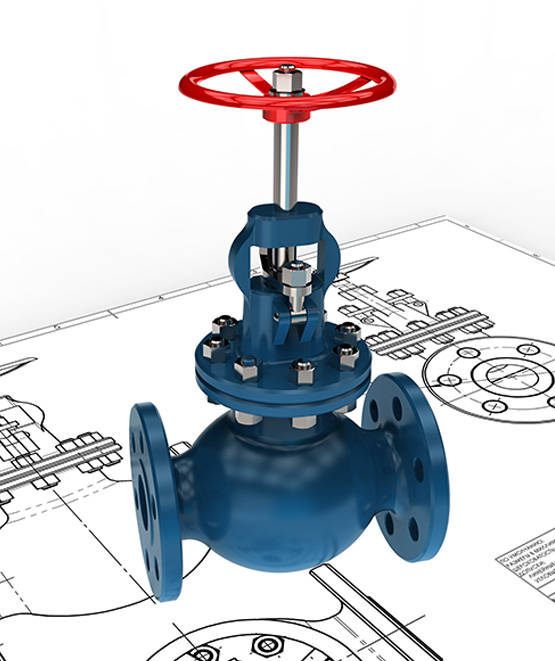
Globe Valve Types By Disc Design
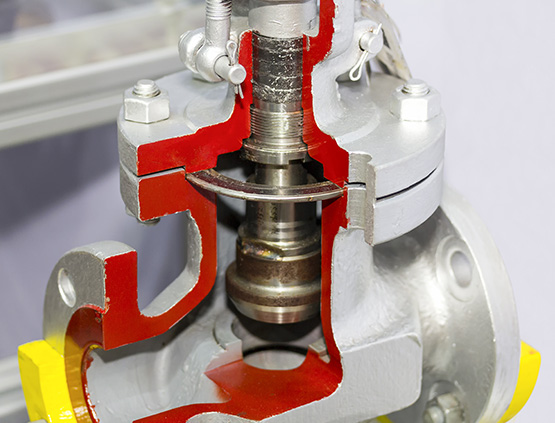
Discs act as gates that prevent leakage. However, there are three different types of disks that work well in specific conditions and needs. Choosing the right disk ensures the longevity of the control valve.
Ball Disk Globe Valve
This works well in low pressure and low-temperature applications. It acts primarily as a start/stop mechanism but has throttling capabilities.
Composition Disk Globe Valve
Better closure means fewer chances of spillage. With that in mind, a disk with an inserted metal ring should work in handy.
Plug Disk Globe Valve
The tapered design ensures better throttling capacity than the ball and composition disks.
Globe Valve Types By Bonnet Design
Valves are created differently. Some don’t have bonnets while others do. Valve bonnets act like accessories where other internal valve components can attach.
There are designs that merge the bonnet with the body. In contrast, some designs have removable bonnets so it’s easy to expose other valve parts for cleaning or maintenance.
Screwed Bonnet Globe Valve
Often found in inexpensive globe valves, screws join the body and the bonnet.
Bolted Bonnet Globe Valve
This type uses bolts to attach the bonnet to the body. Considered the most common, the connection of the body to the bonnet is further enhanced by a gasket. In turn, seals it tightly.
Welded Bonnet Globe Valve
This type is welded instead of attached by screws or bolts, which makes the valve lighter. However, maintenance and repair could be challenging due to the nature of its connection.
Pressure Seal Bonnet Globe Valve
Applications requiring high temperatures and pressures often use this kind of bonnet. With Increased internal pressure, the gasket seal should be very durable as the body transfer the pressure to the gasket.
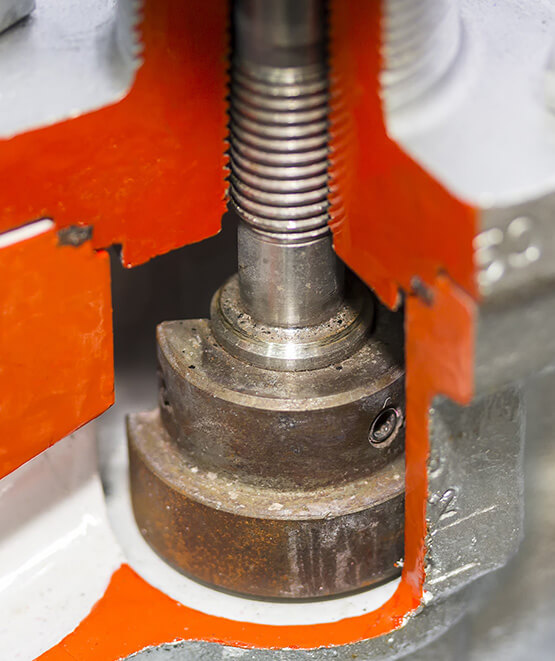
Globe Valve vs. Gate Valve
Globe valves and gate valves may look similar but their internal
designs determine the individual uniqueness of these two.
Flow regulation is the common use for globe valves. True, turn on/off is also one of its applications. The disk that controls the flow moves up and down from the seat, which horizontally placed.
Because of this design, by partially opening the valve, throttling motion becomes possible. The bigger the space between the seat and the disk, the greater the flow. The stem and bonnet located above the disk further enhance the sealing. These valves, while there is a high-pressure loss, can withstand high pressures and temperatures too.
On the other hand, used as a start and stop device, gate valves allow certain liquids and gases to pass through the pipes. Gate valves should not be used to control media flow. Wedged or parallel gates, when in a fully closed position, stop the flow of liquid and gas.
Gate valves cannot be partially opened because the vibration from the liquid or gas moving will eventually ruin the seat. There is minimal loss of pressure because of the linear motion of the media passing in the gate valve.
Globe Valve vs. Ball Valve
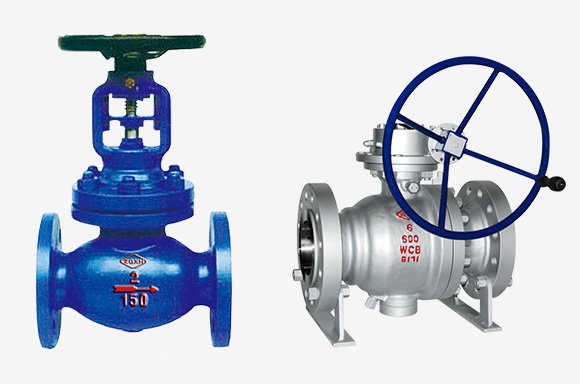
On the outside, globe and ball valves can look exactly the same. However, looking at the internal design, one could easily identify that these two valves work differently. The main difference between the two is the way each closes.
The ball valve stops the flow through the circular yet hollow spherical gate called the ball. Upon a quarter turn, the valve can open or close. On the other hand, the globe valve has a stem that closes it.
The ball valve seats are beside the two openings at both ends. On the contrary, the seat in most globe valves is lying perpendicular to the stem. The disc or plug is set against the seat to seal the valve off.
Request A free quote
Or contact us to see our certificates
We'd like to work with you
- +86 577 5768 9696
- [email protected]

